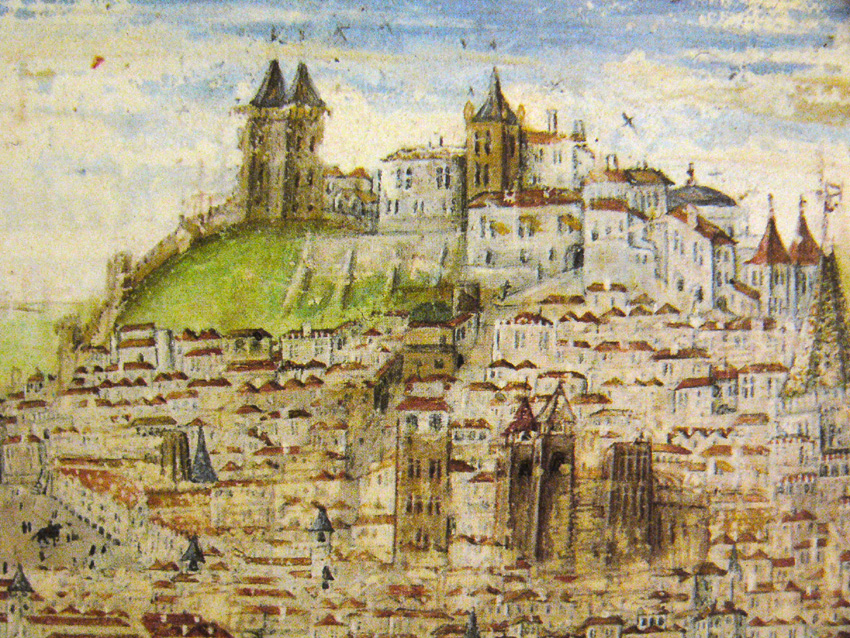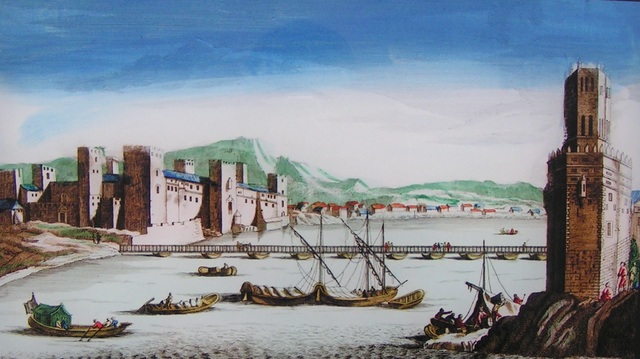|
St George's Castle (other) , the ''Castelo de São Jorge da Mina'' ('Castle of St. George of the Mine'), Elmina, Ghana
{{dab ...
St George's Castle, or variants, may refer to: * Castello di San Giorgio, Mantua, part of the Ducal palace, Mantua, Lombardy, Italy * São Jorge Castle, Lisbon, Portugal * Castle of San Jorge, Seville, Spain * Castle of Saint George, Cephalonia, Greece ** Siege of the Castle of Saint George * St. George's Castle, Preveza, Greece * Castle of Saint George, on Mount Pindo See also * Saint George (other) * Fort St. George (other) * St George's Chapel, Windsor Castle * Elmina Castle Elmina Castle was erected by the Portugal, Portuguese in 1482 as Castelo de São Jorge da Mina (''St. George of the Mine Castle''), also known as ''Castelo da Mina'' or simply ''Mina'' (or ''Factory (trading post), Feitoria da Mina''), in presen ... [...More Info...] [...Related Items...] OR: [Wikipedia] [Google] [Baidu] |
Castello Di San Giorgio, Mantua
The Castello di San Giorgio is part of the Ducal palace of Mantua. It is a moated rectangular castle, each of which's four corners has a large tower and the moat is crossed by three drawbridges. History It was built between 1395 and 1406 on the ruins of the church of Santa Maria di Capo di Bove for Francesco I Gonzaga, to designs by Bartolino da Novara. Ludovico III Gonzaga gave over his rooms in the "Corte Vecchi" to pope Pius II for the Council of Mantua in 1459 - that year, he commissioned Luca Fancelli to rebuild the castle as a palazzo rather than as a defensible castle. He also commissioned the frescoes of the castle's Camera degli Sposi. In 1490 the castle became the site of the studiolo of Isabella d'Este, remaining there until she moved it to the "Corte Vecchi" in 1519-1522. In 1496 the condottiero Paolo Vitelli was captured by Francesco II and imprisoned in the castle. It remained the main Gonzaga residence for around a century until Guglielmo Gonzaga moved his apa ... [...More Info...] [...Related Items...] OR: [Wikipedia] [Google] [Baidu] |
São Jorge Castle
Saint George's Castle ( pt, Castelo de São Jorge; ) is a historic castle in the Portuguese capital of Lisbon, located in the ''freguesia'' of Santa Maria Maior. Human occupation of the castle hill dates to at least the 8th century BC while the first fortifications built date from the 1st century BC. The hill on which Saint George's Castle stands has played an important part in the history of Lisbon, having served as the location of fortifications occupied successively by Phoenicians, Carthaginians, Romans, and Moors, before its conquest by the Portuguese in the 1147 Siege of Lisbon. Since the 12th century, the castle has variously served as a royal palace, a military barracks, home of the Torre do Tombo National Archive, and now as a national monument and museum. History Although the first fortifications on this hilltop date from the 1st century BC, archaeological excavations have identified a human presence in the Tagus valley as far back as the 8th century BC. The first ... [...More Info...] [...Related Items...] OR: [Wikipedia] [Google] [Baidu] |
Castle Of San Jorge
The Castle of San Jorge was a medieval fortress built on the west bank of the Guadalquivir river in the Spanish city of Seville (Spain). It was also used as headquarters and prison for the Spanish Inquisition. It was demolished in the 19th century and made into a food market. A museum in the underground ruins focuses on the history of the castle, the Spanish Inquisition and of religious repression. Next to the food market in the Barrio de Triana, the Alley of the Inquisition, which was part of the fortifications, now connects Castilla Street with the Nuestra Señora de la O Walk. History The Visigoths created a fortification in the area next to the river to defend Spalis, the Visigoth name for Seville. During the Almohad domain in 1171, Jucef Abu Jacub, king of Isbilia, ordered the construction of the Puente de barcas (Bridge of Boats), a floating bridge laid over a row of boats, to link the east and west shores. That bridge was chained to what was then called the Castle o ... [...More Info...] [...Related Items...] OR: [Wikipedia] [Google] [Baidu] |
Cephalonia
Kefalonia or Cephalonia ( el, Κεφαλονιά), formerly also known as Kefallinia or Kephallenia (), is the largest of the Ionian Islands in western Greece and the 6th largest island in Greece after Crete, Euboea, Lesbos, Rhodes and Chios. It is also a separate regional units of Greece, regional unit of the Ionian Islands (region), Ionian Islands region. It was a former Latin Catholic diocese Roman Catholic Diocese of Cephalonia and Zakynthos, Kefalonia–Zakynthos (Cefalonia–Zante) and short-lived titular see as just Kefalonia. The capital city of Cephalonia is Argostoli. History Antiquity Legend An ''Aitiology, aition'' explaining the name of Cephallenia and reinforcing its cultural connections with Athens associates the island with the mythological figure of Cephalus, who helped Amphitryon of Mycenae in a war against the Taphians and Teleboans. He was rewarded with the island of Same (ancient Greece), Same, which thereafter came to be known as Kefallinia, Cephallenia. ... [...More Info...] [...Related Items...] OR: [Wikipedia] [Google] [Baidu] |
Siege Of The Castle Of Saint George
The siege of the Castle of Saint George occurred from 8 November 1500 until 24 December 1500, when following a series of Venetian disasters at the hands of the Turks, the Spanish-Venetian army under Captain Gonzalo Fernández de Córdoba succeeded in capturing the Turkish stronghold of Cephalonia. Cephalonia, one of the Ionian Islands off the western coast of Greece, had been in the hands of the Italian counts palatine of the Tocco family until 1479, when it was captured by the Ottoman Empire. With the exception of a brief period of Venetian control in 1482–83, the island remained in Ottoman hands until 1500. The Second Ottoman–Venetian War broke out in 1499 with the Ottoman attack on the Venetian port of Lepanto on the Greek mainland, which surrendered on 24 August 1499. The war continued to go badly for Venice, as the Ottomans shifted their attention to the Morea and stormed Modon on 9 August 1500, followed by the surrender thereupon of the neighbouring forts Coron and ... [...More Info...] [...Related Items...] OR: [Wikipedia] [Google] [Baidu] |
Castle Of Saint George (Galicia)
The Castle of Saint George was a medieval fortress located in the granite massif of Mount Pindo, in Carnota. History The buildings stood for a good part of the Middle Ages, after being founded (or refounded) in the 10th century (at the time of the Western Towers) by the bishop Sisnando II, as part of his strategy of fortifying the Galician coast against the continuous Norman and Arab attacks and looting from the sea, also defending at this point an important path to Santiago de Compostela, a coveted economic and religious center of the time. That is why it is considered one of the oldest stone castles of Galicia, and of the few that could never have been conquered, that is known. The fortification was located on Pico Pedrullo, a steep cliff high located on the coast of Carnota near the site of , a spectacular natural geological formation with which they melted the walls of the fortress themselves, creating a complex that was very difficult to access. Consisting of several wat ... [...More Info...] [...Related Items...] OR: [Wikipedia] [Google] [Baidu] |
Mount Pindo
Mount Pindo () is a mountain located in the autonomous community of Galicia, Spain. It is in the municipality of Carnota and province of A Coruna. Composed of granite, it has a height of 627m. It is of local mythological importance. Geography Mountain is located in the Atlantic coast near Carnota. Mountain prevent connections between villages. Since 2014 it is part of Natura 2000 special area of conservation of Monte Pindo and Carnota. The area covers 4674 hectares. A number or rare animals live in the area, including otter, many bats, black-throated loon and peregrine falcon. Local environmentalists are campaigning to develop the area to full nature park.Monte Pindo, Parque Natural! Adega. In 2013 there was a devastating wildfire at Monte Pindo. It burned more than 1600 hectares ... [...More Info...] [...Related Items...] OR: [Wikipedia] [Google] [Baidu] |
Saint George (other)
Saint George was a soldier in the Roman army in the 3rd and 4th centuries AD, venerated as a Christian martyr. Saint George or Saint George's may also refer to: Film and television * ''Saint George'' (film), a 2016 Portuguese film * ''Saint George'' (TV series), an American television comedy Honors * Cross of St. George, a military honor in Russia * Order of St. George, a military honor in Russia * Ribbon of Saint George, a Russian patriotic ribbon * Sacred Military Constantinian Order of Saint George, a Roman Catholic order of chivalry Monasteries * Saint George Monastery, al-Khader, a Greek Orthodox monastery in al-Khader, West Bank * St. George's Monastery, Wadi Qelt, an ancient monastery in Waldi Qilt, in the West Bank People * St George of Choziba, seventh-century saint * St George I of Antioch, Syriac Orthodox Patriarch of Antioch (died 790) * St George the Confessor, Bishop of Antioch in Pisidia (died 814) * St George, Archbishop of Develtos, one of the Martyrs of ... [...More Info...] [...Related Items...] OR: [Wikipedia] [Google] [Baidu] |
Fort St
A fortification is a military construction or building designed for the defense of territories in warfare, and is also used to establish rule in a region during peacetime. The term is derived from Latin ''fortis'' ("strong") and ''facere'' ("to make"). From very early history to modern times, defensive walls have often been necessary for cities to survive in an ever-changing world of invasion and conquest. Some settlements in the Indus Valley civilization were the first small cities to be fortified. In ancient Greece, large stone walls had been built in Mycenaean Greece, such as the ancient site of Mycenae (famous for the huge stone blocks of its 'cyclopean' walls). A Greek '' phrourion'' was a fortified collection of buildings used as a military garrison, and is the equivalent of the Roman castellum or English fortress. These constructions mainly served the purpose of a watch tower, to guard certain roads, passes, and borders. Though smaller than a real fortress, they a ... [...More Info...] [...Related Items...] OR: [Wikipedia] [Google] [Baidu] |
St George's Chapel, Windsor Castle
St George's Chapel at Windsor Castle in England is a castle chapel built in the late-medieval Perpendicular Gothic style. It is both a Royal Peculiar (a church under the direct jurisdiction of the monarch) and the Chapel of the Order of the Garter. St George's Chapel was founded in the 14th century by King Edward III and extensively enlarged in the late 15th century. It is located in the Lower Ward of the castle. The castle has belonged to the monarchy for almost 1,000 years and was a principal residence of Elizabeth II before her death. The chapel has been the scene of many royal services, weddings and burials – in the 19th century, St George's Chapel and the nearby Frogmore Gardens superseded Westminster Abbey as the chosen burial place for the British royal family. The running of the chapel is the responsibility of the dean and Canons of Windsor who make up the College of Saint George. They are assisted by a clerk, verger and other staff. The Society of the Friends of St Ge ... [...More Info...] [...Related Items...] OR: [Wikipedia] [Google] [Baidu] |





